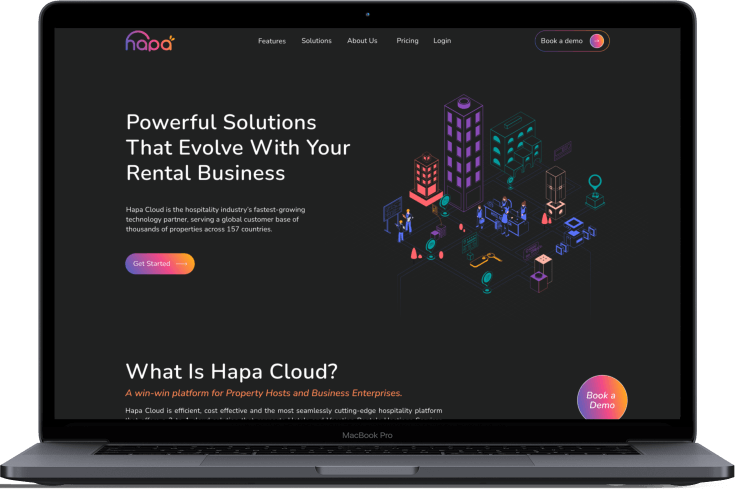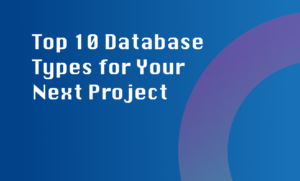Leading Web Application Development Solutions for Your Success
Unveiling Our Inspiring Web Application Development Success Story
Bringing Innovation to Every Corner of the Globe: Our skilled team is dedicated to delivering cutting-edge web applications that transcend boundaries, making clients worldwide happy. Our unwavering commitment to top-notch security ensures your digital assets are safeguarded.
Years of Experience
Over 10 years of delivering cutting-edge web applications to clients across 15 countries.
Projects Completed
Successfully developed and deployed 250 web applications for diverse business needs.
Skilled Team
Our dedicated team of 30 web developers and designers collaborate to create exceptional digital experiences.
Happy Clients
100% client satisfaction rate, resulting in long-lasting partnerships and repeat business.
Cross-Platform Proficiency
Expertise in developing responsive web applications accessible across various devices, platforms, and browsers.
Fast Load Times
Our web applications boast an average load time of 900 miliseconds, ensuring optimal user experiences.
Security Focus
Implemented layers of security measures, resulting in 100% reduction in vulnerabilities.
Cutting-Edge Technologies
Proficiency in utilizing the latest tools and technologies, including Java, Python, AngularJs, ReactJs, and frameworks like Nestjs, Nextjs, Laravel, etc.
On-Time Delivery
100% of projects delivered within or ahead of schedule, ensuring timely deployment.
What is Web Application Development?
User-Centric Design
Front-End Development
Back-End Development
Database Management
Security Measures
Scalability
Cross-Browser Compatibility
Testing and Quality Assurance
Deployment and Maintenance
Why Choose GTC for Web Application Development?
At GTC, we go beyond mere development – we engineer digital experiences that leave a lasting impression. Our team of seasoned developers, designers, and strategists collaborates to craft web applications that resonate with your audience and align with your business objectives. With a track record of 12 years in the industry, we have honed our expertise to deliver solutions that are:
Innovative
We harness the power of cutting-edge technologies and creative solutions to bring your visions to life.
User-Centric
Our user-first approach ensures that every feature is designed with the end-user in mind, resulting in intuitive and engaging experiences.
Scalable and Secure
Our applications are engineered to accommodate growth while maintaining robust security measures to protect your data.
Performance-Driven
We optimize for speed, ensuring that your web application loads swiftly and performs seamlessly.
Collaborative
We value your insights and collaborate closely to create a web application that reflects your unique identity and goals.
Get started within
2 Business Days
Unlock your risk-free 1 week trial!
Client Review
Their work ethics was impeccable, they have very good technical skills and handled the development process in a professional manner. I will not hesitate to recommend him.

I use GTC for all of my offshore projects currently. Team is well qualified and have incredible level of professionalism. I'd recommend them to anyone looking to expand capabilities.

They are very professional in their work, and its project management is flawless and are readily available whenever we need to solve production issues. Nice team to work with.

We outsourced our new innovative application to GTC for development, testing and deployment; and I must say the team delivered the final application with expected outcome and on time.

Web Application Development Services
Custom Web Application Development
Transform your unique ideas into reality with our custom web application development services. Our expert developers leverage cutting-edge technologies to create tailored solutions that perfectly align with your business needs and goals. Whether it's an e-commerce platform, content management system, or a specialized business tool, we craft web applications that empower your digital journey.
Responsive Web Design
In the era of mobile-first experiences, responsive web design is paramount. Our design wizards craft captivating and intuitive user interfaces that seamlessly adapt to various devices and screen sizes. From wireframing and prototyping to the final design, we ensure your web application development looks stunning and functions flawlessly across all platforms.
Front-End Development
The face of your web application development, the front end, is where aesthetics meet functionality. Our front-end development expertise guarantees pixel-perfect, interactive, and user-friendly interfaces. Using HTML, CSS, JavaScript, and the latest front-end frameworks, we create dynamic experiences that captivate users from the first click.
Back-End Development
Behind every exceptional web application development is a robust and efficient back-end infrastructure. Therefore, our back-end development team specializes in crafting scalable, secure, and high-performance solutions. Moreover, we architect databases, develop APIs, and integrate complex functionalities to ensure seamless user experiences and efficient data management.
API Integration
Enhance your web application's capabilities by seamlessly integrating third-party APIs and services. Whether it's payment gateways, social media integration, or data analytics tools, we ensure that your web application interacts smoothly with external services. As a result, you unlock new possibilities and functionalities, ultimately improving user experience and efficiency.
E-Commerce Solutions
In the competitive world of online commerce, we create powerful e-commerce platforms that drive sales and enhance customer engagement. Moreover, from user-friendly product catalogs to secure checkout processes, our e-commerce solutions are specifically tailored to optimize conversions. As a result, businesses can provide a seamless and delightful shopping experience for their customers.
Web Application Security
Safeguarding your data and user information is our top priority. Our comprehensive security measures, including data encryption, authentication, and regular vulnerability assessments, ensure that your Web Application Development process remains secure. As a result, your application is protected from potential threats, providing peace of mind to you and your users.
Performance Optimization
Speed matters in Web Application Development. Therefore, our performance optimization experts fine-tune your web application to ensure lightning-fast load times and optimal user experiences. Moreover, through techniques such as caching, image optimization, and content delivery networks (CDNs), we make sure your web application consistently performs at its best.
Ongoing Maintenance and Support
Our relationship doesn't end with deployment. Instead, we offer continuous maintenance and support to keep your Web Application Development running smoothly. Furthermore, from updates and bug fixes to technical assistance, our dedicated team ensures your application remains up-to-date and highly responsive.
At GTC, we don’t just develop web applications – we engineer digital solutions that define success in the modern era. Our commitment to innovation, expertise, and collaborative partnerships sets us apart as the ideal choice for businesses seeking to harness the full potential of Web Application Development. With our comprehensive Web Application Development services, we ensure scalable, secure, and high-performance solutions tailored to your needs. Join us in shaping the future of digital excellence, one line of code at a time, through cutting-edge Web Application Development.
Technology Stack
Where your business meets cutting-edge technology
Frontend Development
Need expert frontend developers for your projects? If so, look no further than our dedicated developer services. Moreover, we offer skilled and experienced developers for short-term or long-term partnerships. As a result, we help drive your business forward with innovative and efficient frontend solutions.
Backend Development
Database Development
DevOps
Frameworks
Platforms/BI Tools
Technology Stack
React.js
A widely used JavaScript library for building user interfaces. It enables the creation of reusable UI components and offers efficient rendering through a virtual DOM.
Angular
A comprehensive framework by Google for building dynamic web applications. It provides features like two-way data binding, dependency injection, and a modular architecture.
Svelte
An innovative approach to building web applications, where components are compiled at build time for optimal performance at runtime.
Ember.js
A full-featured framework for ambitious web applications, emphasizing convention over configuration and providing tools for productivity.
TypeScript
A superset of JavaScript that adds static typing, interfaces, and other features to enhance code quality and maintainability.
Babel
A JavaScript compiler that converts modern code into an older version, ensuring compatibility with a broader range of browsers.
Vue.js
A progressive framework that focuses on simplicity and ease of integration. It allows developers to build interactive UIs using components.
Webpack
A powerful build tool that bundles and manages assets, such as JavaScript, CSS, and images, for efficient deployment.
Redux
A state management library often used with React to manage application state and facilitate data flow.
Node.js
A runtime environment that allows running JavaScript on the server side, enabling efficient and scalable backend development.
Python (Django or Flask)
Django is a high-level Python framework that encourages rapid development and follows the "batteries-included" philosophy. Flask is a lightweight and flexible Python micro web framework.
Ruby on Rails
A framework that promotes convention over configuration and enables the quick development of feature-rich web applications.
Java (Spring Boot)
Spring Boot simplifies Java application development by providing production-ready defaults and streamlined configuration.
ASP.NET Core (C#)
A cross-platform framework for building high-performance, modern web applications using C#.
Go (Golang)
Known for its efficiency and simplicity, Go is suitable for building scalable backend services.
PHP (Laravel)
Laravel is a PHP framework that offers expressive syntax and tools for building elegant and feature-rich web applications.
Express.js
A minimal and flexible Node.js framework for building web applications and APIs.
FastAPI
A modern, fast, and highly performant Python web framework for building APIs with automatic validation and documentation.
PostgreSQL
A powerful open-source relational database known for its extensibility and advanced features.
MySQL
A widely used open-source relational database management system.
MongoDB
A NoSQL database that stores data in JSON-like documents, offering flexibility and scalability.
Redis
An in-memory data structure store used as a cache, message broker, and real-time data store.
SQLite
A self-contained, serverless, and zero-configuration SQL database engine.
Microsoft SQL Server
A relational database management system developed by Microsoft.
Oracle Database
A robust and feature-rich relational database management system.
Cassandra
A distributed NoSQL database designed for handling large amounts of data across commodity servers.
Elasticsearch
A search and analytics engine that provides full-text search capabilities and real-time data analysis.
Docker
A platform for developing, shipping, and running applications in containers, ensuring consistent environments across different stages.
Kubernetes
An open-source container orchestration platform that automates deployment, scaling, and management of containerized applications.
Jenkins
An extensible automation server used for continuous integration and continuous delivery (CI/CD) pipelines.
Travis CI
A cloud-based CI/CD service that integrates with GitHub repositories.
CircleCI
A continuous integration and delivery platform that supports various programming languages and frameworks.
GitLab CI/CD
Integrated CI/CD pipelines directly within the GitLab repository.
Ansible
An open-source automation tool for configuring and managing systems, applications, and infrastructure.
Terraform
An infrastructure as code tool for provisioning and managing cloud resources.
Prometheus
A monitoring and alerting toolkit designed for reliability and scalable monitoring of applications and systems.
Ruby on Rails
An opinionated framework emphasizing convention over configuration, following the "Rails Way" for rapid development.
Django
A high-level Python framework that promotes clean, pragmatic design and encourages rapid development.
Flask
A micro web framework for Python that provides the essentials needed to build web applications.
Express.js
A minimalistic Node.js framework that simplifies the creation of web applications and APIs.
Spring Boot
A Java framework that simplifies application setup, development, and deployment.
Laravel
A PHP framework known for its elegant syntax and features like routing, caching, and authentication.
ASP.NET Core
A cross-platform framework for building modern, cloud-based, and internet-connected applications.
FastAPI
A high-performance Python framework for building APIs with automatic validation and comprehensive documentation.
Gin
A lightweight and fast Go web framework that provides essential routing and middleware features.
AWS
Amazon's cloud platform offering a wide range of scalable and reliable cloud services.
Azure
Microsoft's cloud computing platform providing a suite of services for building, deploying, and managing applications.
Google Cloud Platform
Google's suite of cloud services for computing, storage, and data analytics.
Heroku
A platform as a service (PaaS) that simplifies deploying, managing, and scaling applications.
Firebase
Google's mobile and web application development platform that offers authentication, real-time databases, and more.
Tableau
A popular data visualization tool that helps users create interactive and shareable dashboards and reports.
Power BI
Microsoft's business analytics service for visualizing data and sharing insights across an organization.
Looker
A business intelligence and data exploration platform for building and sharing reports and dashboards.
D3.js
A JavaScript library for creating custom data visualizations using HTML, SVG, and CSS.
Web Security
Secure Architecture Design
- Layered defence mechanisms in architecture design to combat various threats.
- Utilization of secure coding practices to prevent common vulnerabilities like SQL injection and XSS.
- Implementation of strong authentication and authorization mechanisms.
- Design of security controls to mitigate potential threats and attacks.
Data Encryption and Privacy
- Implementation of end-to-end encryption to protect data during transmission.
- Utilization of encryption protocols (TLS) to secure data in transit and at rest.
- Compliance with data protection regulations to ensure user privacy.
- Granular access controls and role-based permissions to safeguard sensitive data.
Ongoing Monitoring and Incident Response
- Continuous monitoring and intrusion detection to identify and respond to anomalies.
- Comprehensive incident response plan with predefined roles and actions.
- Regular security assessments, vulnerability scanning, and penetration testing.
- Post-incident analysis to enhance future prevention and response.
Secure Development Lifecycle
- Integration of security into all phases of the development lifecycle.
- Security training for developers to raise awareness about potential threats.
- Utilization of version control and automated testing to catch vulnerabilities early.
- Secure configuration management for servers, databases, and other components.
User Authentication and Access Controls
- Implementation of strong password policies and multi-factor authentication (MFA).
- Role-based access control (RBAC) to ensure proper authorization for users.
- Regular review and revocation of user access privileges.
- Monitoring and detection of suspicious login attempts.
Security Audits and Compliance
- Regular security audits to identify vulnerabilities and compliance gaps.
- Compliance with industry standards and regulations such as GDPR, HIPAA, etc.
- Implementation of security controls aligned with best practices.
- Maintenance of a robust audit trail for accountability.
Secure Third-Party Integration
- Thorough evaluation of third-party integrations for potential security risks.
- Secure API design and authentication mechanisms for external services.
- Regular updates and patches for integrated components to address vulnerabilities.
- Continuous monitoring of third-party integrations for security threats.
Employee Training and Awareness
- Security training programs to educate developers and staff about threats.
- Promotion of a culture of security awareness to enhance risk prevention.
- Encouragement of responsible disclosure of vulnerabilities by users and third parties.
- Collaboration with security experts to stay ahead of emerging threats.
AI-Powered Web Application
Chatbots for Enhanced Interaction
Content Generation Wizardry
Personalized Recommender Systems
Visual Intelligence for Images and Videos
Adaptive Cybersecurity
Predictive Analytics Insights
Natural Language Processing (NLP) Magic
Machine Learning-Driven Insights
Developer Roles
MEAN Stack Developer
E-Commerce Platform Developer
React Native Developer
Laravel Developer
Cloud Developer (AWS/Azure/GCP)
UI/UX Developer
Full Stack JavaScript Developer
Python Django Developer
Angular Developer
Vue.js Developer
Spring Framework Java Developer

High-Performance Responsive Designs
- Seamlessly adaptable user interfaces across devices and screen sizes.
- Optimized code and assets for faster loading times and enhanced user experience.
- Mobile-first approach to ensure excellent performance on all devices.
- Utilization of modern CSS frameworks for fluid and visually appealing designs.

Robust Frontend Development
- Expertise in cutting-edge frontend technologies, including React, Angular, Vue.js, and more.
- Building interactive and engaging user interfaces with smooth animations and transitions.
- Ensuring cross-browser compatibility and consistent user experiences.
- Integration of state management solutions like Redux for efficient data flow.

Scalable Backend Solutions
- Proficiency in backend technologies such as Node.js, Python, Ruby on Rails, and more.
- Creation of RESTful APIs and microservices architecture for flexible and extensible applications.
- Implementation of secure authentication and authorization mechanisms.
- Integration of third-party services and APIs for enhanced functionality.

Efficient Database Management
- Expertise in diverse databases, including SQL (PostgreSQL, MySQL) and NoSQL (MongoDB, Redis).
- Designing and optimizing database schemas for efficient data storage and retrieval.
- Implementing data caching strategies to enhance application performance.
- Ensuring data security and compliance with best practices.

DevOps and Continuous Integration
- Utilization of Docker and Kubernetes for seamless deployment and scalability.
- Automated CI/CD pipelines for efficient and reliable code deployment.
- Monitoring and logging strategies using tools like Prometheus and ELK stack.
- Infrastructure as code (IaC) practices with tools like Terraform for streamlined management.

Cutting-Edge Frameworks and Libraries
- Proficiency in a wide range of frameworks: Django, Flask, Express.js, Spring Boot, and more.
- Selection of appropriate frameworks based on project requirements and scalability needs.
- Integration of modern libraries and plugins for enhanced functionality and features.

Cloud Integration and Hosting
- Deployment and management of applications on cloud platforms like AWS, Azure, and Google Cloud.
- Utilization of serverless architecture for cost-effective and scalable solutions.
- Integration of CDN services for optimized content delivery and reduced latency.
- Data migration to the cloud for improved accessibility and flexibility.

Secure Authentication and Authorization
- Implementation of OAuth, JWT, and other secure authentication mechanisms.
- Role-based access control (RBAC) to ensure proper data protection and user permissions.
- Encryption of sensitive data at rest and during transmission.
- Regular security audits and vulnerability assessments to maintain robust security posture.

Performance Optimization and Load Testing
- Profiling and optimization of code and database queries for improved application speed.
- Load testing using tools like JMeter to ensure application stability under heavy traffic.
- Utilization of content delivery networks (CDNs) to enhance content delivery and reduce server load.
- Minimization of resource usage to ensure consistent performance and user satisfaction.

User-Centric Design and Usability
- In-depth user research and personas to guide intuitive and user-friendly designs.
- Implementation of smooth navigation, clear calls to action, and effective information architecture.
- A/B testing and user feedback analysis for continuous improvement of user experience.
- Accessibility considerations to ensure inclusivity for all users.

Data Analytics and Visualization
- Integration of BI tools like Tableau, Power BI, or Looker for insightful data visualization.
- Custom dashboards and reports tailored to specific business needs.
- Utilization of D3.js and other data visualization libraries to create interactive and engaging charts.
- Analysis of user behaviour and engagement patterns to inform data-driven decisions.

Continuous Learning and Innovation
- Dedication to staying updated with the latest industry trends and emerging technologies.
- Regular training and upskilling to ensure expertise in new tools and techniques.
- Collaborative approach to problem-solving, fostering a culture of innovation within the team.
- Proactive exploration of innovative solutions to tackle complex challenges.
Development process
Activities
- Client Interviews
- Stakeholder Meetings
- Surveys and Questionnaires
- Market Research
- Use Case Analysis
- Prototyping
- Requirement Workshops
- Benchmarking
- User Stories
- Requirements Documentation
Activities
- System Architecture Design
- Database Design
- Component and Module Design
- User Interface Design
- Data Modeling
- Security Architecture
- Integration Design
- Technology Stack Selection
- Performance and Scalability Planning
- Prototyping
Activities
- Test Planning
- Test Case Design
- Test Execution
- Functional Testing
- Integration Testing
- Regression Testing
- Performance Testing
- Security Testing
- User Acceptance Testing (UAT)
- Defect Identification and Reporting
Activities
- Issue Tracking and Management
- Bug Fixing
- Performance Monitoring
- Security Patching
- Software Updates and Upgrades
- Compatibility Testing
- User Support and Help Desk
- User Training and Documentation
- Data Backup and Disaster Recovery
- Routine Maintenance Tasks
Our team of experienced analysts and project managers meticulously analyze the gathered requirements. We create a comprehensive plan that outlines project milestones, timelines, and resource allocation. Our goal is to provide a clear roadmap for the development process and ensure smooth project execution.
Activities
- Project Kickoff Meeting
- Feasibility Study
- Requirement Analysis
- Business Process Modeling
- System Architecture Design
- Data Analysis
- Risk Analysis and Mitigation Planning
- Cost Estimation
- Schedule Development
- Stakeholder Interviews
Activities
- Coding and Programming
- Software Development
- Module Development
- Database Development
- Front-End Development
- Back-End Development
- Application Development
- Unit Testing
- Integration Testing
- CI and CD
Activities
- Release Planning
- Environment Setup
- Deployment Planning
- Configuration Management
- Build and Compilation
- Deployment Automation
- Staging Environment Deployment
- Production Environment Deployment
- Rollback Planning
- Version Control Tagging
Software Development methodologies we use
DevOps
Agile Methodology
Agile is an iterative and flexible approach that focuses on delivering software incrementally. Moreover, it promotes adaptive planning, collaboration, and continuous improvement. For example, Agile methodologies include Scrum, Kanban, and Extreme Programming (XP). Furthermore, these methodologies emphasize shorter development cycles called sprints, regular customer feedback, and the ability to adapt to changing requirements throughout the development process.
Scrum
Scrum is a widely used agile framework that emphasizes teamwork, collaboration, and iterative progress. Specifically, it divides the development process into short iterations called sprints, usually lasting two to four weeks. Moreover, Scrum teams hold daily stand-up meetings to discuss progress, plan work, and address any obstacles. Additionally, the product backlog, consisting of user stories and tasks, is managed in a prioritized manner. As a result, the most valuable features are developed first, ensuring efficiency and focus on user needs.
Kanban
Kanban is another agile methodology that visualizes the workflow as a Kanban board. Typically, the board consists of columns representing different stages of development, such as ‘To Do,’ ‘In Progress,’ and ‘Done.’ Moreover, each work item is represented by a card that moves across the board as it progresses. Furthermore, Kanban promotes a steady flow of work and actively limits work in progress to prevent bottlenecks, ensuring efficiency and productivity.
Disruptive ideas come to those who think.

Top 10 Database Types for Your Next Project
Explore the top 10 database types for software projects, their unique features, and which one to choose for your next development endeavor. Make informed decisions for data management in your applications.

The Ultimate Guide For Outsourcing Web Development Project
Are you looking for the ultimate guide to help you outsource your web development project? Outsourcing web development projects can be incredibly complex, and it’s

The Latest Trends In Web And Mobile App Development: Insights From GTC Experts
As web and mobile app development experts, we understand the importance of staying up-to-date with the latest technology trends.
How do you handle IT Operations risks?
Handling IT Operations risks involves implementing various strategies and best practices to identify, assess, mitigate, and manage potential risks that can impact the stability and security of IT systems and services. This includes proactive monitoring, regular assessments, robust security measures, disaster recovery plans, and continuous improvement processes to ensure operational resilience.
How do you prioritize IT security risks?
Prioritizing IT security risks involves assessing the potential impact and likelihood of each risk, as well as considering the resources available for mitigation. By categorizing risks based on severity and probability, organizations can focus on addressing high-risk vulnerabilities first to prevent major security incidents.
Are there any specific industries or use cases where the risk of unintended consequences from bug fixes is higher?
Yes, certain industries like healthcare, finance, and transportation are more prone to unintended consequences from bug fixes due to their critical nature and impact on people's lives. The complexity of systems, regulations, and data sensitivity in these sectors increases the risk of bugs causing serious issues.
What measures can clients take to mitigate risks associated with software updates and bug fixes on their end?
To mitigate risks associated with software updates and bug fixes, clients can take measures such as thorough testing before deployment, backing up data, ensuring system compatibility, and monitoring performance post-update.
Is there a specific feedback mechanism for clients to report issues encountered after updates?
Yes, our software development company provides a dedicated feedback mechanism for clients to report any issues they encounter after updates. This allows us to address and resolve any issues quickly and efficiently to ensure customer satisfaction.

Free 30min Consultation
Have a new project in mind? Schedule a 30-minute discovery call or fill out the quick form, and together we’ll explore the possibilities.